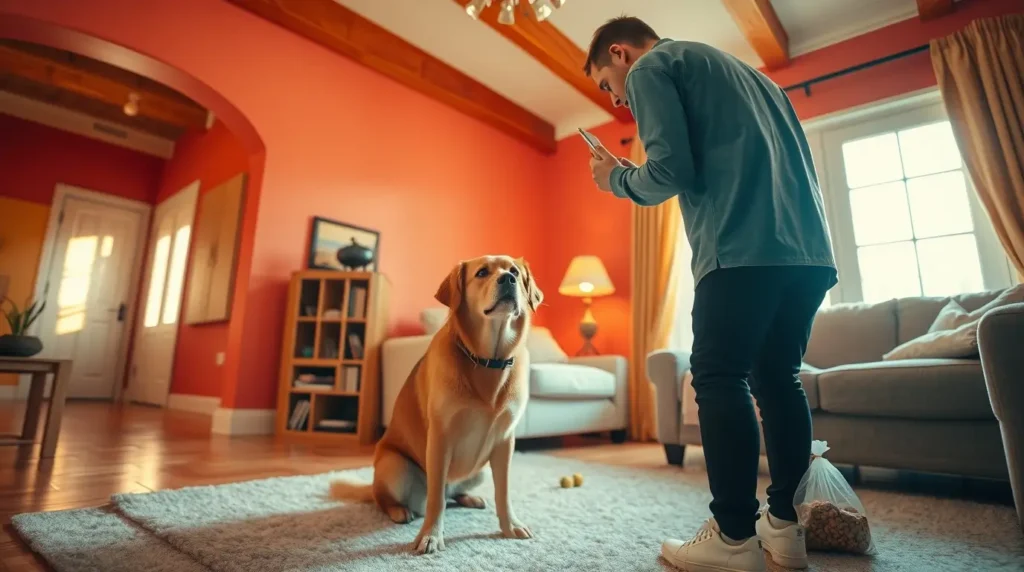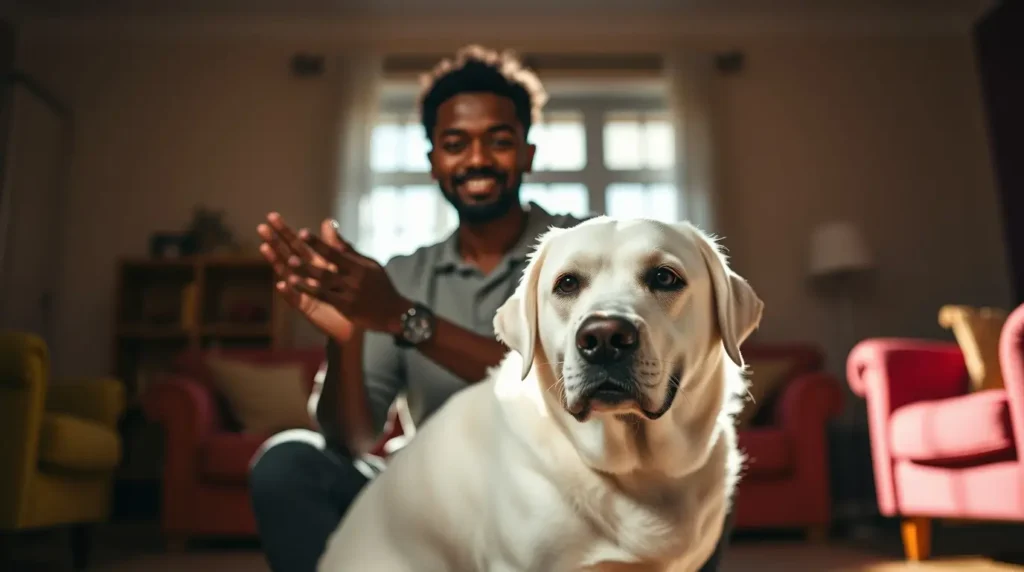Imagine calling your dog’s name, but they don’t react. You clap your hands, whistle, or even rattle their favorite treat bag—still, no response. Could it be that your furry friend isn’t just ignoring you but actually experiencing hearing loss? As a pet owner, it’s essential to recognize the early signs of deafness to ensure your dog’s well-being and happiness.
To bring you the most reliable and practical advice on how to find out if your dog is deaf, Whizpet has conducted thorough research, consulting expert veterinarians, pet behaviorists, and real-life case studies. Our goal? To help pet owners identify hearing issues early and take the best steps to support their dogs. We’ve compiled the latest expert-backed insights to help you determine if your dog is experiencing hearing loss.
Hearing impairment in dogs is more common than you might think, and it can go unnoticed for a long time. If you’re wondering how to find out if your dog is deaf, this guide will walk you through five easy and proven ways to test your pet’s hearing at home. Keep reading to learn how to find out if your dog is deaf, what causes deafness in dogs, and how you can help them lead a fulfilling life.
Why Is It Important to Check for Canine Deafness?
Deafness in dogs can be congenital (present at birth) or acquired due to aging, infections, trauma, or exposure to loud noises. Early detection is crucial to ensure your dog leads a happy and safe life. By identifying hearing loss, you can adapt training methods and improve communication with your furry friend. If you’re unsure how to find out if your dog is deaf, testing and observing their behavior can provide clear answers.

5 Easy & Proven Ways to Find Out If Your Dog Is Deaf
1. How to Find Out If Your Dog Is Deaf Through Everyday Sounds
One of the first signs of hearing loss is a lack of response to common sounds. Here are some things to check:
- Does your dog recognize their name when you call them?
- Do they wake up to loud noises, such as clapping or a door slamming?
- Are they startled by sudden sounds, like a vacuum cleaner or a whistle?
If you suspect your pet might not be responding as they used to, learning how to find out if your dog is deaf through simple sound tests is the first step.
2. How to Find Out If Your Dog Is Deaf Using Sound-Based Tests
A simple at-home test can help you determine if your dog is deaf. Try these methods:
- Whistle Test: Blow a whistle behind them and observe their reaction.
- Hand Clap Test: Clap loudly while standing behind them.
- Squeaky Toy Test: Squeeze a toy without them seeing it and check if they respond.
- Canine Deafness Frequency Test: Some high-pitched sounds may still be detected if partial hearing is intact.
If your dog does not react to these sounds, they may have hearing impairment. These easy steps provide a clear method for how to find out if your dog is deaf at home.
3. Signs and Behavioral Changes That Show Your Dog Might Be Deaf
Dogs with hearing loss often exhibit changes in behavior, such as:
- Increased sleeping and difficulty waking up.
- Startling easily when approached from behind.
- Unresponsiveness to commands they previously obeyed.
- Excessive barking due to their inability to hear their own voice.
If these behaviors seem familiar, it’s worth exploring how to find out if your dog is deaf through further testing.
4. The Puppy Deaf Test – How to Find Out If Your Puppy Is Deaf
If you suspect that your puppy is deaf, perform a simple puppy deaf test:
- Stand behind your puppy without them seeing you.
- Make a distinct noise (whistle, clap, or shake keys).
- Watch for head tilts, ear movements, or any reaction.
Common Question: Is my 8-week-old puppy deaf?
Some puppies may have delayed hearing development, but a complete lack of response to sounds could indicate congenital deafness. If you’re unsure how to find out if your dog is deaf, starting early with simple hearing tests is key.
5. How to Find Out If Your Dog Is Deaf Through a BAER Test
For a definitive answer, a veterinarian can conduct a Brainstem Auditory Evoked Response (BAER) test, which is the gold standard for diagnosing canine deafness.
- What is a BAER test? It measures electrical activity in the brain when the dog hears a sound.
- Is it painful? No, it’s a non-invasive procedure and completely safe.
If your dog has confirmed hearing loss, your vet will guide you on training and communication strategies to improve their quality of life. A professional evaluation is the best way for pet owners wondering how to find out if your dog is deaf with certainty.
Challenges Deaf Dog Owners Face & How to Overcome Them

1. Training Challenges & Solutions
Deaf dogs may struggle with verbal commands, but hand signals and visual cues can be effective.
Solution: Use consistent hand signals for commands and reward with treats.
2. Safety Concerns
Without hearing, dogs may not notice dangers like traffic.
Solution: Always use a leash in open areas and train them to respond to vibrations.
3. Difficulty in Communication
Dogs rely on sound cues, so communication can be challenging.
Solution: Use light signals (flashing a flashlight) or floor vibrations to get their attention.
4. Behavioral Changes
Some dogs become anxious or bark excessively when they lose hearing.
Solution: Provide reassurance through positive reinforcement and maintain a structured routine.
FAQs About Canine Deafness
1. How to Find Out If Your Dog Is Deaf at Home?
You can use sound-based tests such as clapping, whistling, or using a squeaky toy to see if your dog responds.
2. How to Tell If Your Dog Is Deaf or Just Ignoring You?
A deaf dog will consistently not respond to sounds, while an ignoring dog may respond to certain commands, especially when motivated by treats.
3. How to Find Out If Your Dog Is Deaf If They Suddenly Lose Hearing?
Sudden hearing loss can indicate an infection, blockage, or neurological issue. Consult a vet as soon as possible to ensure accurate diagnosis and proper care.
4. When Dogs Go Deaf, Do They Think Everyone Stopped Talking to Them?
Dogs don’t process language like humans, but they may become confused or anxious due to changes in their auditory environment.
5. What Are the Best Ways to Communicate with a Deaf Dog?
Use hand signals, vibrations, and positive reinforcement techniques to train and interact with your deaf dog.
Final Thoughts: How to Find Out If Your Dog Is Deaf and What to Do Next
If you’ve determined that your dog is deaf, don’t worry! Many deaf dogs live happy, fulfilling lives with proper training and adjustments.
- Use Hand Signals: Teach sign-based commands for training.
- Vibration Alerts: Use gentle taps on the floor to get their attention.
- Leash Training: Keep them safe by using a leash in unfamiliar areas.
- Positive Reinforcement: Reward good behavior with treats and affection.
By understanding your dog’s condition and adapting to their needs, you can strengthen your bond and ensure their well-being. Learning how to find out if your dog is deaf is just the first step toward giving them a happy, well-adjusted life.
Call to Action: Share Your Experience on How to Find Out If Your Dog Is Deaf
If you found this guide helpful, share it with other dog owners! Have experience with a deaf dog? Comment below with your tips and experiences to help fellow pet parents.
Related blog: For more detailed information about pet care

